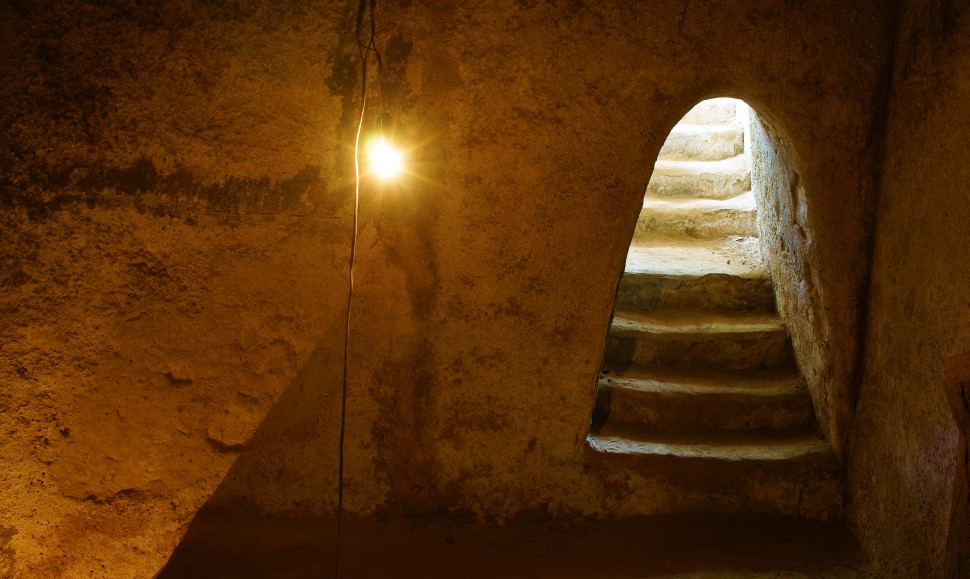Ho Chi Minh City Pt 2: War Remnants Museum and Cu Chi Tunnels
South East Asia is no stranger to war and while the Second World War caused unimaginable suffering across the region, the horrors of the Vietnam War arguably left even bigger scars.
It's difficult to get an accurate impression of Ho Chi Minh City (formerly Saigon) – or Vietnam – without a visit to one of the country's numerous museums and battlefields related to the conflict – often known as "the American War" by locals.
War Remnants Museum
Before visiting the Cu Chi Tunnels, I decided to get a better picture of the period in the War Remnants Museum. I find the locations where such horrific events unfolded hold much more significance with some background knowledge.
Looking at the fascinating and often disturbing photos and exhibits of the War Remnants Museum, I realised how much of my view of the war was informed by American cinema. Regular US troops fought in Vietnam from 1965 to 1973, but the war really began back in 1955 when western powers (chiefly France and the USA) began to resist Ho Chi Minh's communists (backed by the Chinese and Russians).
Outside the museum is a selection of aircraft and tanks left behind by the Americans when they withdrew in 1973, leaving the southern Vietnamese to fight the North alone; the southern Republic of Vietnam would be defeated by 1975.
 Helicopter at the War Remnants Museum, Ho Chi Minh, Vietnam (xuanhuongho/Bigstock.com)
Helicopter at the War Remnants Museum, Ho Chi Minh, Vietnam (xuanhuongho/Bigstock.com)
But inside is most affecting, where photos of the bloodshed are truly haunting. An exhibition detailing the effects of Agent Orange on the Vietnamese is also shocking in the extreme.
Any visit to this museum has to be tempered with the knowledge that its previous title was the "Exhibition House for US and Puppet Crimes". As such it focuses on Vietnamese suffering, but omits atrocities carried out by North Vietnam.
Emerging into the courtyard once more, the sights and sounds of peacetime Saigon around me, I felt truly fortunate never to have experienced the horrors of war.
Cu Chi Tunnels
The next day I and my German and American friends booked a boat trip to the Cu Chi Tunnels; the boat trip is a little pricier than a regular bus trip, but very much worth it. After the museum experience the previous day, I was expecting a similarly sombre experience, but the boat trip to the tunnels was very pleasant. A breakfast of ham, cheeses and fruits was laid on, which we enjoyed as we took the sights of the busy river. Looking at the size of HCMC, we were glad we avoided the heavy traffic by taking the river route.
As well as speaking good English, our guide was extremely helpful and was able to answer all our questions. It amazes me that guides can offer such enthusiasm on the same subject each and every day – even one as fascinating as the Cu Chi Tunnels.
The tunnels themselves were a revelation. Thousands of Vietcong troops cooked, ate and slept in this vast network of tunnels, part of a wider tunnel network that proved invaluable to the North in resisting South Vietnamese and US forces. Aside from engaging the enemy, the Viet Cong would tend to emerge from the tunnels only at night to scavenge for food or supplies, or to tend crops. I found it amazing that the Viet Cong could be farmers and soldiers at the same time.
 Booby Trap near Cu Chi tunnels, Vietnam
Booby Trap near Cu Chi tunnels, Vietnam
We were led into safer parts of the network that had been widened to accommodate larger western tourists. My American friend only ventured a short distance before turning back; these tunnels are not recommended for claustrophobics.
It was incredible to learn how the Viet Cong survived in such terrible conditions – as likely to die from malaria as a US bombing raid (we explored an enormous crater left by a B52 bomb).
 Cu Chi Tunnel, Vietnam (xuanhuongho/Bigstock.com)
Cu Chi Tunnel, Vietnam (xuanhuongho/Bigstock.com)
Later we got the chance to fire a Type 56 AK47 – a gun used extensively by the Viet Cong – for only a dollar a bullet. The kick back on the gun was astonishing. My American friend and I fired a few rounds, but the German found the whole thing a little distasteful, which, in hindsight, I could understand.
A delicious Vietnamese lunch was served back on the boat – including some tasty vegetarian options. And, with our stomachs full, we enjoyed the winding journey back into the heart of Ho Chi Minh City, with a clearer understanding of what happened in Vietnam all those years ago.
Get a Quote